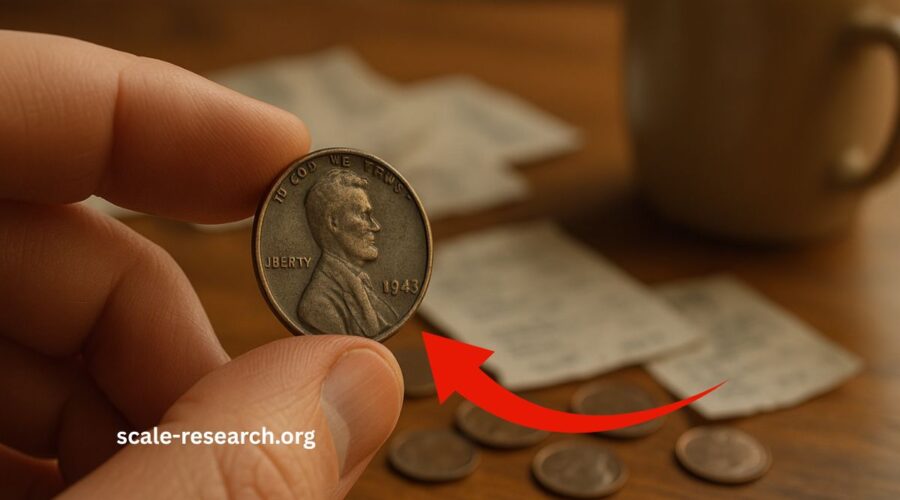How A Lincoln Wheat Penny Still In Circulation Became Worth $4.78 Million
Rare coins fascinate collectors and casual finders alike—but few stories captivate more than the Lincoln Wheat Penny worth $4.78 million still in circulation.
Minted during World War II, this penny was struck on a copper planchet by mistake, giving rise to one of the biggest numismatic legends. Let’s delve into every detail that makes this penny so compelling.
What Is the Lincoln Wheat Penny?
First issued in 1909, the Lincoln Wheat Penny—also called the Wheat Cent—honored President Abraham Lincoln. It’s recognizable by its portrait on the obverse and twin wheat stalks on the reverse. These coins circulated until 1958, when they made way for the Lincoln Memorial design.
The $4.78 Million Coup: 1943 Copper Wheat Penny
In 1943, as the U.S. shifted to zinc-coated steel pennies to conserve copper for the war effort, a handful of copper planchets from 1942 were mistakenly used. These rare coins, known as 1943 Copper Wheat Pennies, are today regarded as “the Holy Grail of error collectors”.
- Only 15–30 of these error coins are known.
- One fetched $4.4 million recently.
- Another was verified at $4.78 million, per June 9, 2025 reports.
- Previous sales ranged from $240,000 for well-graded AU50 pieces to $840,000–$4.4 million for mint-state examples.
Why Is It So Valuable?
Three key factors drive the record-breaking price:
- Rarity – Only a few of these errors exist.
- Historical Significance – Error struck during WWII minting perched it as a historic anomaly.
- High Grading – Coins in MS (Mint State) condition, particularly AU50 and above, fetch astronomic prices.
Quick Facts Table
| Detail | Fact |
|---|---|
| Coin Type | Lincoln Wheat Penny (1909–1958) |
| Error Date | 1943 |
| Coin Composition (Normal) | Zinc-coated steel |
| Error Composition | Bronze (95 % copper) |
| Known Examples | ~15–30 |
| Highest Confirmed Sale | $4,780,000 (verified June 2025) |
| Other Notable Sales | $4.4M; $840K; $240K (AU50 bronze) |
| Identification Tips | Copper color; magnet-resistant; ~3.11 g |
| Key Collectors’ Value Drivers | Rarity, historical context, grading |
How to Spot a 1943 Copper Wheat Penny
Here’s a simple checklist:
- Look for a reddish-brown color—no silver-gray tint.
- Test with a magnet: magnet won’t stick to copper.
- Weigh the coin: copper versions are ~3.11 g (steel are ~2.7 g).
- Check date and mintmark (Philadelphia, Denver, San Francisco). Copper 1943-D (Denver) is the rarest.
What If You Find One?
- Verify: magnet test + accurate scale.
- Authenticate: Submit to PCGS, NGC, or a reputable dealer.
- Grade: High-graded coins (MS or AU50+) attract top-dollar auction interest.
- Sell: Auction houses command the best exposure and prices.
Other High‑Value Wheat Pennies
Besides the 1943 copper error, three other major rarities include:
- 1909-S VDB Penny: Only ~484,000 minted, VDB initials sparked controversy—sales over $300,000.
- 1955 Double Die Penny: Misaligned strike creates doubled letters; well-preserved examples sell for tens of thousands.
- 1943 Bronze AU50: A mid-grade bronze variant fetched $240,000 .
The central takeaway? A tiny slip-up in 1943 created a penny that’s now worth $4.78 million. Combining its unprecedented rarity, WWII-era context, and emphasis on high state-of-preservation, this coin symbolizes numismatic brilliance.
If you own a 1943 Lincoln Wheat Penny that’s copper, non-magnetic, and ~3.11 g, you might just hold one of the most valuable pennies in the world.
FAQs
Could this penny still be hiding in my change?
Yes! Despite its age, a few may still surface from drawers, jars, or loose change.
How many 1943 copper wheat pennies exist?
Experts estimate around 15–30 known examples, making them extremely scarce .
How do I get my penny authenticated?
Use professional services like PCGS or NGC, or trusted coin dealers, to grade and confirm authenticity.


Leave a Reply